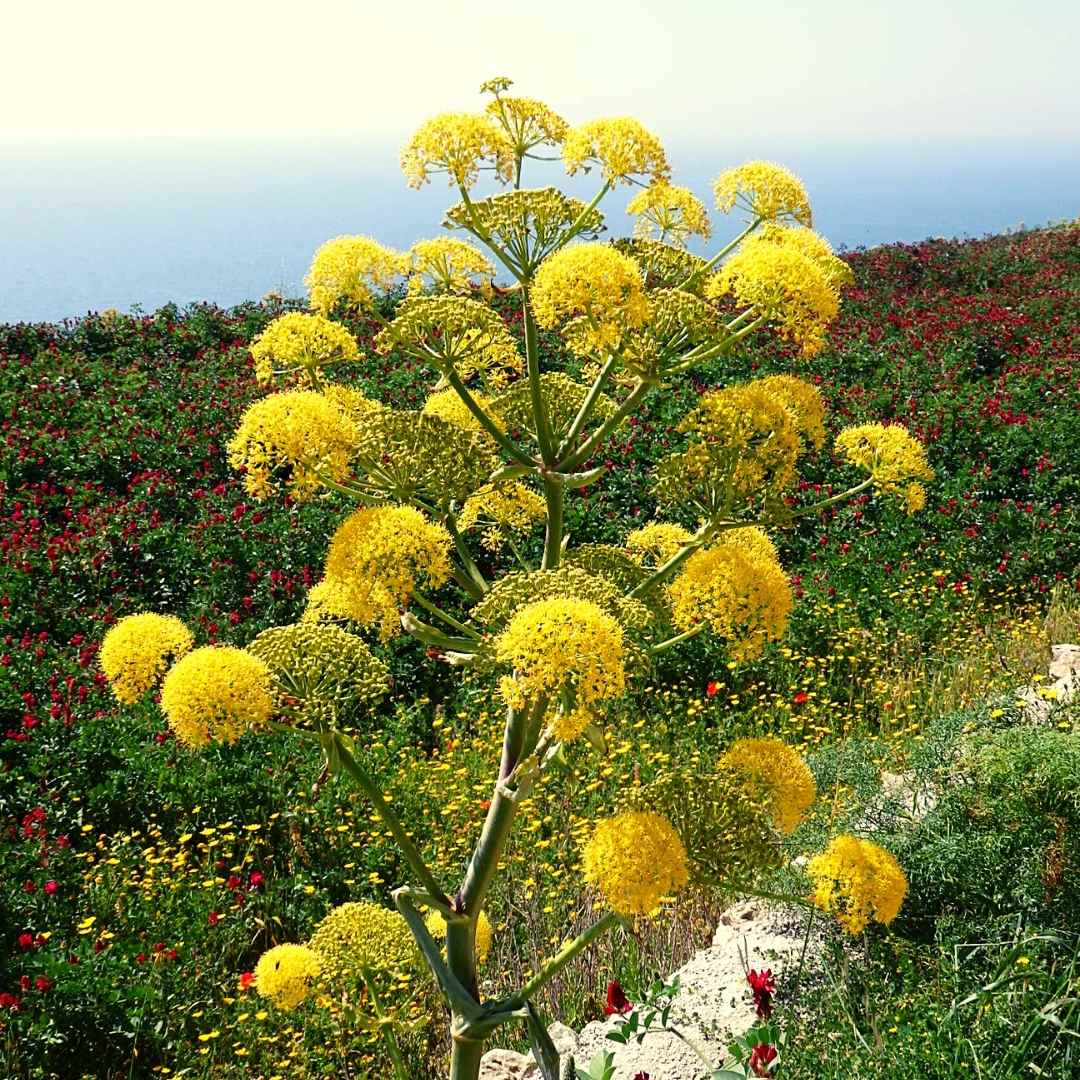Foraging Gozo. Sea Beet.
Sea Beet is found growing wild on Gozo and is a great alternative to chard.

Who knew this particular plant was from the fennel family? Giant Fennel to be exact. Before you go chopping it into your next soup – read on to explore the benefits of these tall, yellow beauties and grab one to investigate yourself on your next walk on Gozo.


Botanical Name: Ferula communis – L. Synonyms: Ferula brevifolia, Ferula linkii Family Name: Apiaceae or Umbelliferae Maltese Name: Ferla Common Names: Common narthex, Giant Fennel Meaning of the Name: Ferula, from Latin, a Ferule is a schoolmaster's rod, such as a cane, stick, or flat piece of wood, used in punishing children. The Giant fennel has tall sticklike stems, communis, from Latin, common
Giant fennel is a herbaceous perennial plant growing to approximately 1–4M tall. It has a hollow, succulent stem. The leaves are tripinnate or even more finely divided, with a stout basal sheath clasping the stem. The flowers are usually yellow, rarely white, produced in large umbels. On Gozo, it is in flower from March to May. The flowers are hermaphrodite (have both male and female organs) and are pollinated by flies. The plant is self-fertile. Many plants of this genus, especially Ferula communis are referred to as ’giant fennel’, although they are not fennel in the strict sense.



Fessoukh means that ’which undoes spells’.
Heléna Szöllősy
Fessoukh mixed with oils used for skin problems and to heal feet cracks. It is used for rheumatism and moths or ring worm. Gum resin is added to some depilatory preparations. The roots are also used, especially in a preparation used for hair care.
Pre-blossom inflorescence, young stems. Unopened inflorescences are cooked with steam like couscous and added olive oil and vinegar. Over consumption for several, more than 5-6 may cause intoxication.
This plant is also well known for its toxicity and its anticoagulant activity. Severe hemorrhagic syndrome characterizes the poisoning called ferulosis or ferulisme. Studies on overdose of medicinal uses of fessoukh in traditional medicine as well as alimentary use of the plant show clinical and biochemical data of intoxication by this plant, which are dominated by haemorrhage as a consequence of blood coagulation disturbance
Keen to own the book? Click here to purchase the e-version of Weeds for Health on Gozo.

Author : Heléna Szöllősy. Editor: GITH
Helena is an expert on the medicinal properties of plants having trained in Herbal Medicine and Naturopathy, specialising in Phytotherapy including Homeopathy, Aromatherapy, Apitherapy and Bach Flower Therapy.
Sea Beet is found growing wild on Gozo and is a great alternative to chard.
Did you know Wild Asparagus Is really good for your skin? You can find it on Gozo all year round.
Wild Artichokes Are found growing wild on Gozo and super healthy for the liver.
Small White Clover, found growing wild on Gozo and known to be lucky makes a great pudding!